Brush-turkeys were hunted for food in the Great Depression and nearly disappeared. My 1992 edition of The Australian Museum’s Encyclopedia of Australian Animals lists these creatures as “possibly endangered”. To anyone living in Noosa, such a suggestion seems absurd.
Brush-turkeys are a remarkable come-back story. Research has revealed that in Brisbane between 1995 and 2015, the numbers of Brush-turkeys increased by an incredible 700 per cent. It is possible that a changing garden aesthetic – away from cottage English gardens and towards more bushy, native gardens – may have something to do with the rise of the urban turkey. The birds have also learnt to take advantage of pets, chasing away cats and dogs from food bowls. Like White Ibis, Brush-turkeys have discovered that living among humans has its rewards.
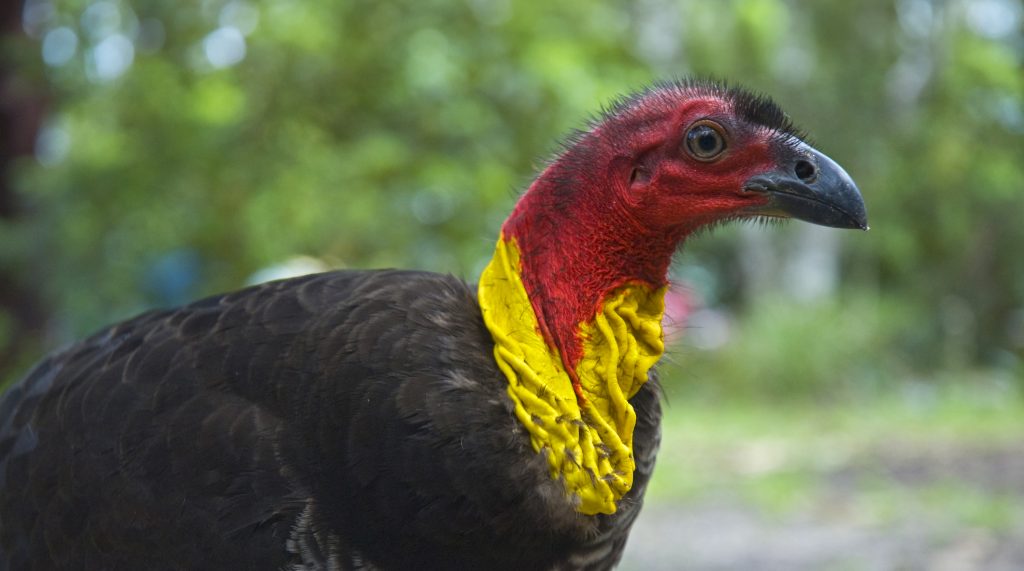
The Australian Brush-turkey (aka Bush-turkey or Scrub-turkey) is one of three native megapodes or mound-builders, the other two being the Orange-footed Scrubfowl and the Malleefowl. The Brush-turkey is the biggest of the three.
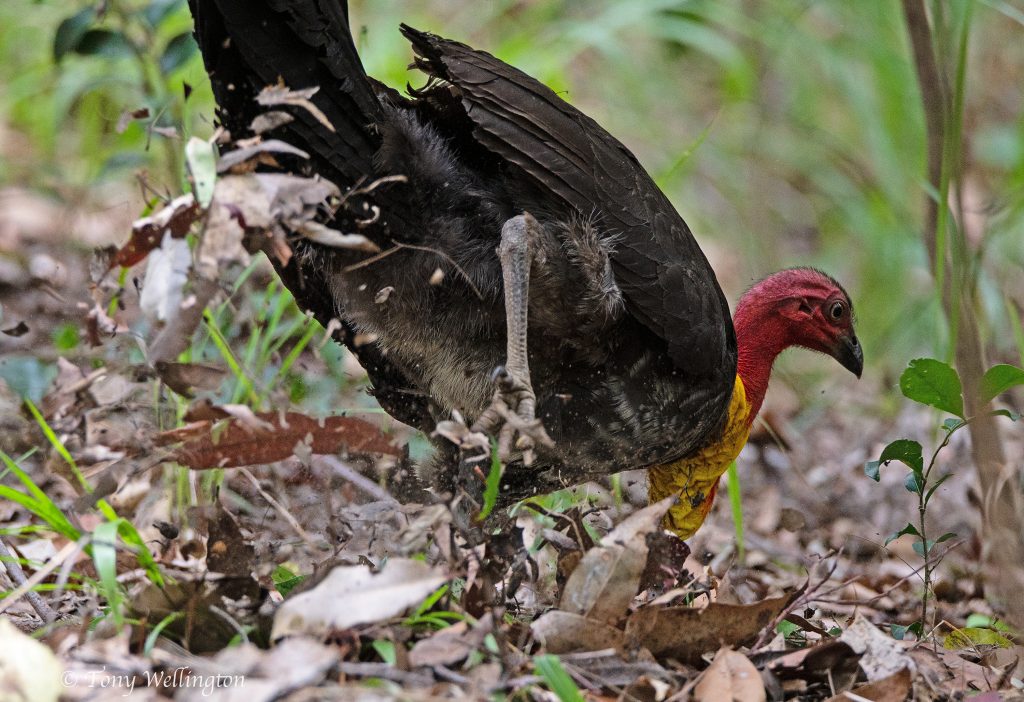
Megapodes are regarded as the earliest diverging lineage of fowl-like birds. Many existing fossil records come from the Pliocene – more than 3 million years ago.
Megapodes don’t require body heat to incubate their eggs. Instead, they use the heat generated by rotting plant material in the incubation mound. The mound acts like a compost heap. In this regard, they are similar to crocodiles.
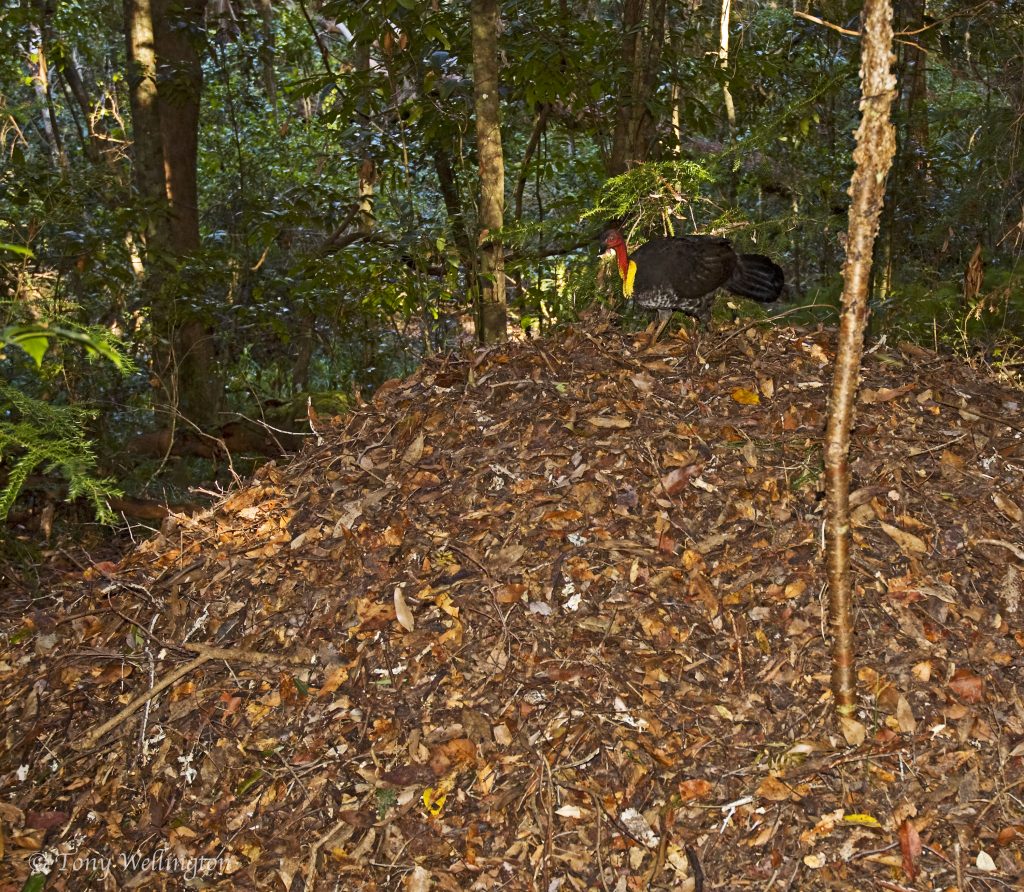
The male bird builds the heap, working diligently – one might say single-mindedly – and at the same time fighting off other males wishing to take over the mound. It’s like a game of king of the castle.
A single female can lay up to 30 eggs. These may be deposited in several mounds. DNA analysis has shown that a third of the chicks in any given mound are not fathered by the dominant male in charge of that hillock.
The male will keep the eggs at a constant temperature, around 33 to 35 degrees, by adding or removing material to the mound. He uses his beak as a thermometer. The temperature of the nest determines the sex of the juveniles. At 34 degrees there are an equal number of males and females, but there are more males when it is warmer and more females when cooler. (Temperature dependent sex determination is reasonably common in reptiles, but only megapodes are believed to exhibit this trait amongst bird species.)
As a result of this unique incubation method, the baby Brush-turkeys hatch out fully feathered. They must dig their own way out of the mound and can fly almost immediately. There is no parental care.
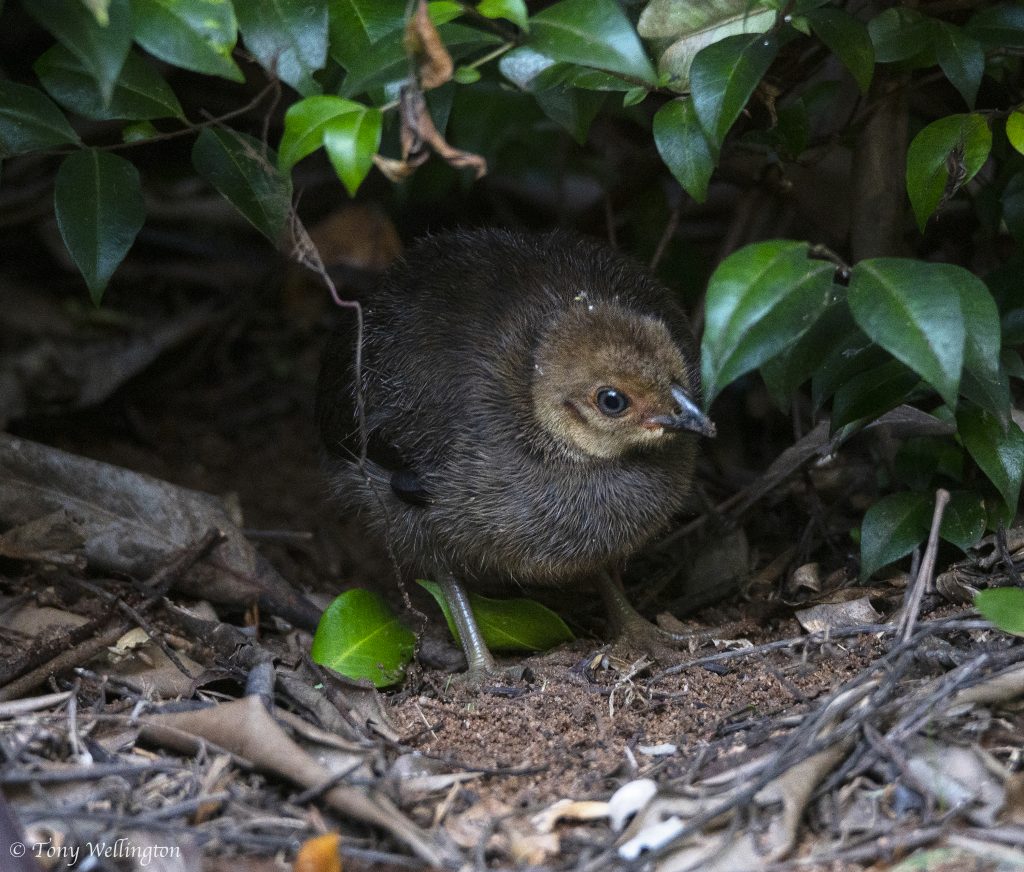
Most baby birds identify their own species through “imprinting”, which occurs when a chick sees its parent at the nest. Plainly this doesn’t work for self-reliant Brush-turkey babies. To determine how Brush-turkey chicks recognise their own kind, researchers presented them with a range of robot chicks made up to look like adult Brush-turkeys. The chicks were more attracted to those robots which exhibited pecking behaviour rather than ones that didn’t move. When ultraviolet light was filtered out, the chicks lost all interest in the robots. This suggests that Brush-turkeys learn about their own kind from both movement and the colour of adult Brush-turkeys.
Speaking of colour, Noosa’s famous white Brush-turkeys are not albinos. They are simply a rare genetic variant.
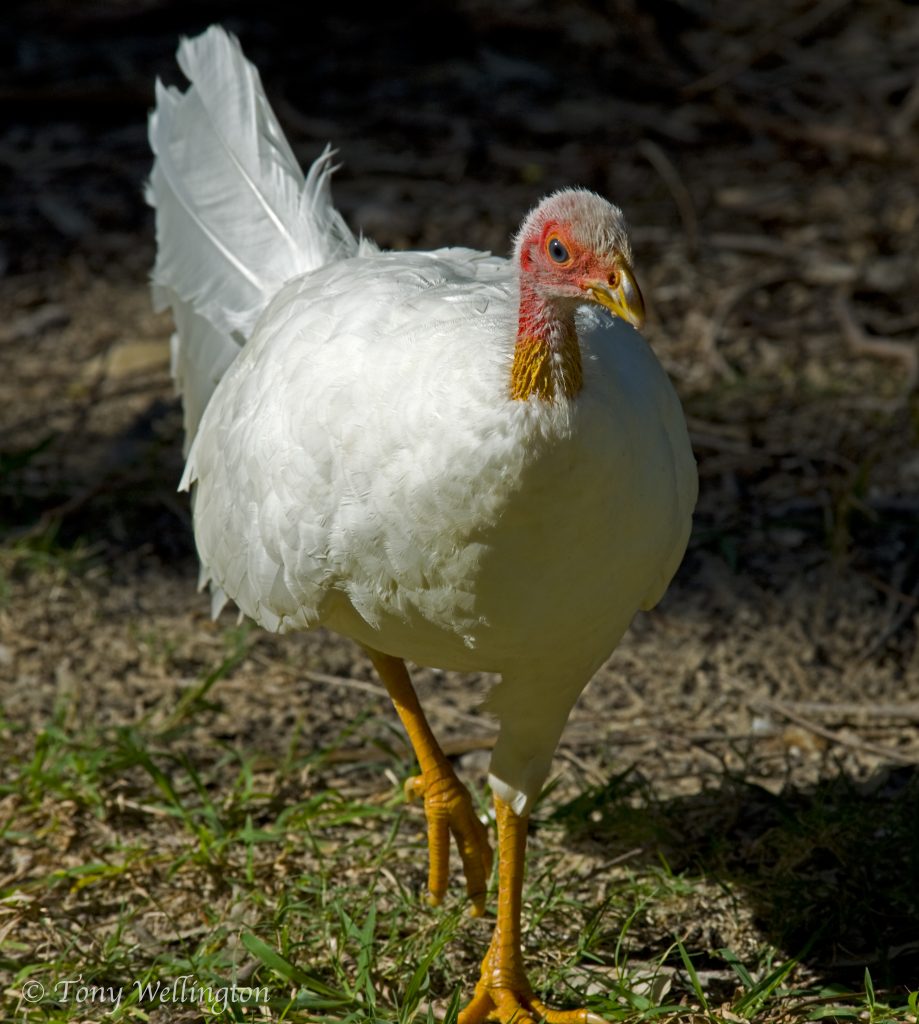
As many local gardeners will know, these birds can become a problem around houses. I have found that they love to dig up sweet potato tubers. The Brush-turkey is protected by law, so it is an offense to harm them.
People who artificially feed their local Brush-turkeys will not endear themselves to their neighbours. To avoid attracting them, it is important to cover compost heaps, or use a Gedye type compost bin sitting on mouse wire.
To keep the birds off vegetable gardens and away from plants, laying chicken wire over the ground will generally deter scratching. A more extreme solution is to corral the entire vegetable garden inside a wire enclosure.
As for those incubation mounds, removing them rarely works. If you spread the compost around, a male trying to build his nest will simply scrape it all up again. If a turkey starts to build a mound in a spot that is simply untenable, say the middle of a driveway, laying plenty of chicken wire on and around the site should deter them. The wire can be weighed down with rocks. It may also help to prune above the site as the reduced shade will make it less attractive to the male birds.
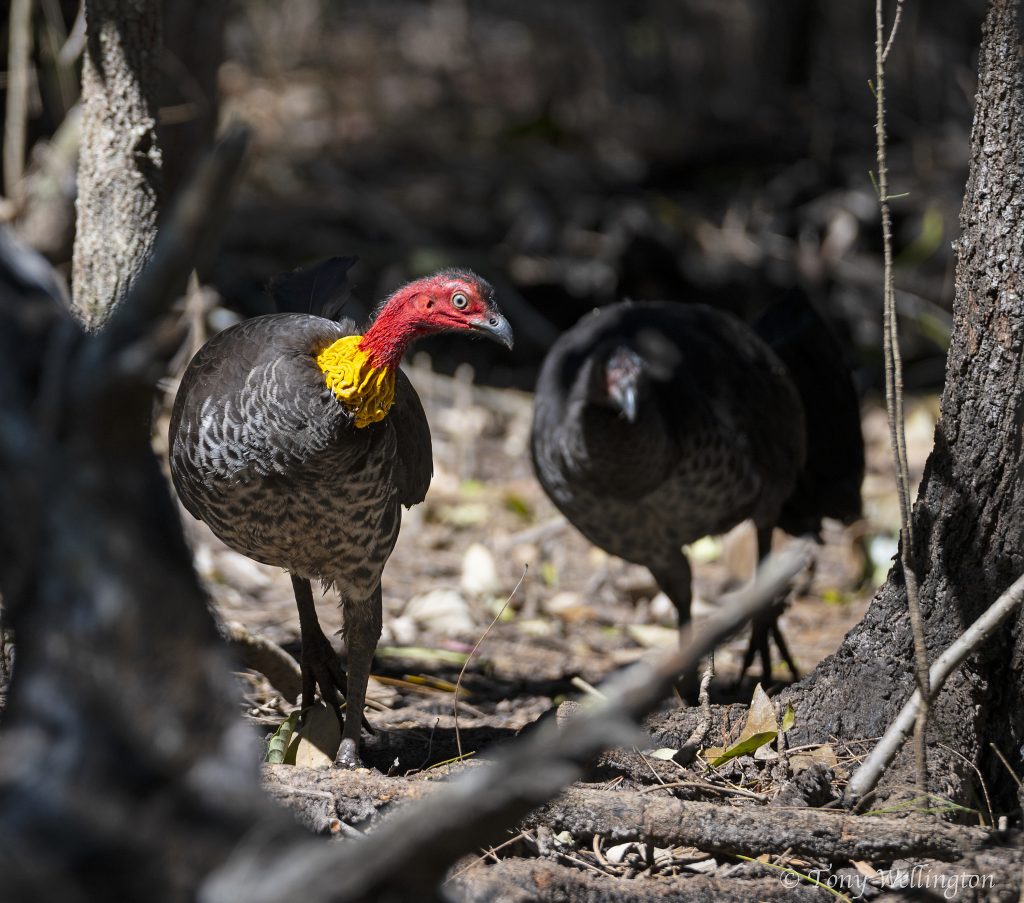
I have read that placing a large mirror in the yard may also help deter Brush-turkeys, because the birds mistake their own reflection for a territorial antagonist. (Did I mention that these ancient birds are not too smart?) I haven’t run experiments to test this gambit.
Alternatively, just sit back, accept their presence, and marvel at these implausible throwbacks: part bird, part reptile.

